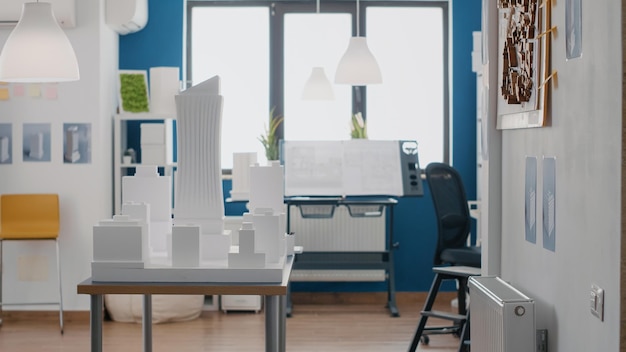In today's fast-paced business world, the design and ambiance of office spaces play a crucial role in productivity, creativity, and employee morale. Selecting the best wall paint for an office is a key decision that can significantly impact the overall look and feel of the workspace. This article explores the importance of paint colors and provides guidance on selecting the ideal interior paint colors for office.

Importance of Wall Paint in Office Design
Impact on Productivity
The color of office walls can influence employee productivity and performance. Studies have shown that certain colors have psychological effects on individuals. For example, shades of blue and green are known to promote calmness and concentration, making them suitable for environments where focus is essential, such as offices and conference rooms. On the other hand, warmer tones like yellow and orange can evoke feelings of energy and creativity, making them suitable for spaces where brainstorming and collaboration occur.
Reflecting Company Culture
The choice of paint colors for office walls can also reflect the company's brand and culture. For instance, a tech startup might opt for vibrant and modern colors to convey innovation and creativity, while a law firm may prefer more traditional and subdued hues to convey professionalism and trustworthiness. By aligning wall colors with the company's identity, employees and visitors alike can feel a sense of belonging and connection to the brand.
Creating a Welcoming Environment
The office environment plays a significant role in shaping employees' attitudes and behaviors. By choosing warm and inviting interior paint colors for office, employers can create a welcoming atmosphere that encourages collaboration, engagement, and overall well-being. Soft neutrals like beige and taupe are popular choices for creating a calming backdrop, while accents of color can be added to inject personality and energy into the space.

Choosing the Best Paint Colors for Office Walls
Consider the Purpose of the Space
Before selecting paint colors, it's essential to consider the function of each area within the office. For example, reception areas and meeting rooms may benefit from calming and professional colors like light gray or muted blue to create a positive first impression on clients and guests. On the other hand, collaborative spaces like break rooms and creative hubs can incorporate bold and vibrant colors to stimulate creativity and foster social interaction among employees.
Evaluate Lighting Conditions
The amount and type of natural and artificial light in the office space can significantly impact how paint colors appear. Spaces with ample natural light may benefit from cooler tones to balance the brightness, while areas with limited natural light may require warmer hues to add warmth and coziness. It's essential to test paint samples under different lighting conditions to ensure that the chosen colors look as intended.
Consider Employee Preferences
Employee satisfaction and comfort should be taken into account when selecting interior paint colors for office. Consider conducting surveys or discussions to gather input from employees on their color preferences. Involving employees in the decision-making process can foster a sense of ownership and satisfaction with the chosen colors.

Best Practices for Office Wall Painting
Use High-Quality Paint
Investing in high-quality paint is crucial for achieving long-lasting and professional-looking results. High-quality paints offer better coverage, durability, and color retention, ensuring that the office walls maintain their appearance over time. Opt for low-VOC or zero-VOC paints to minimize indoor air pollution and create a healthier work environment for employees.
Test Paint Samples
Before committing to a color scheme, it's essential to test paint samples on the office walls. Paint colors can appear differently depending on factors such as lighting, wall texture, and surrounding decor. By painting small sections or using large swatches, you can evaluate how the colors interact with the space and make any necessary adjustments before painting the entire area.
Hire Professional Painters
While DIY painting may seem like a cost-effective option, hiring professional painters can ensure a flawless finish and save time and effort in the long run. Professional painters have the expertise and equipment to prep surfaces properly, apply paint evenly, and achieve professional results efficiently. Additionally, professional painters can offer valuable advice on color selection and provide guidance throughout the painting process.

Conclusion
Selecting the best wall paint for office is a critical aspect of office design that can influence employee productivity, brand perception, and overall workplace ambiance. By choosing paint colors that reflect the company's culture, create a welcoming environment, and cater to employee preferences, employers can create a workspace that fosters creativity, collaboration, and well-being. By following best practices for office wall painting and investing in high-quality paints and professional painters, businesses can achieve stunning results that enhance the overall office experience.
